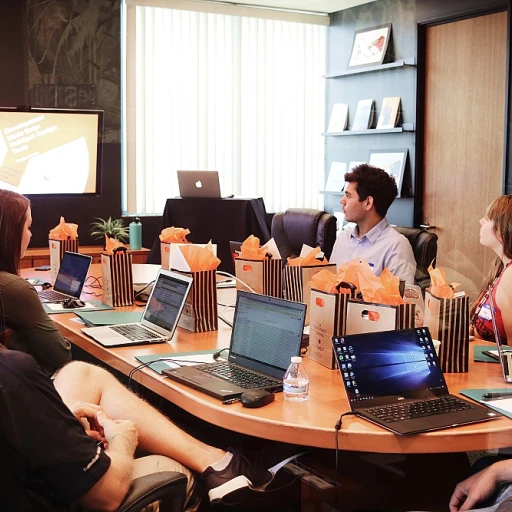
Understanding the Importance of Employee Recognition
The Role of Recognition in Boosting Morale
In the bustling world of business, recognizing the achievements and contributions of employees stands as a pivotal factor in nurturing a thriving workplace. Employee recognition does not merely serve as a pat on the back but plays a profound role in enhancing employee engagement and motivation. By recognizing the hard work and dedication of your team, you lay the groundwork for a company culture where people feel valued and motivated to excel. One of the most vital aspects of employee recognition is its ability to bolster team morale and enhance overall work culture. In a flourishing work environment, acknowledging the efforts of employees goes beyond an annual "employee of the month" award. Instead, it involves generating ideas and programs that resonate on a personal level, reinforcing the notion that each employee’s contribution is noticed and appreciated. There are numerous ways companies can achieve genuine appreciation. This begins by understanding and implementing recognition programs tailored to recognize employees on a more personal level. Some programs can engage employees by providing low-cost or free rewards, which reflect an understanding of their unique preferences and aspirations. Companies might explore offering flexible personal rewards, crafting days dedicated to company-wide appreciation, or finding creative avenues to acknowledge efforts through peer recognition. The value of a well-structured recognition program cannot be overstated, as it has the power to foster a culture of recognition where acknowledgment is a continuous process. Engraining this culture into daily operations ensures employees feel appreciated not once or twice a year, but every day. In turn, this contributes to sustained satisfaction and keeps employee engagement levels sky-high. To explore how recognition can be intertwined with humor and perks, make sure to check out celebrate your first year at work with humor for unique and engaging ideas.Personalized Recognition Approaches
The Power of Personalization in Employee Recognition
Creating an impactful recognition strategy within the company begins by understanding the unique ways employees feel valued. Personalized recognition approaches allow leaders to acknowledge the hard work of individual team members in a manner that resonates on a personal level.
The essence of personalization in recognition lies in understanding that a one-size-fits-all strategy may not be as effective. Tailoring recognitions to match employees’ preferences goes a long way in boosting employee engagement. Consider program ideas that highlight individual contributions through personalized notes, custom awards, or celebrating personal milestones.
- Custom Awards and Gifts: Acknowledge each employee's unique strengths with personalized certificates, trophies, or experiences that they will value and remember. This approach not only enhances appreciation but also builds a stronger culture of recognition.
- Personal Milestones: Celebrating an employee's work anniversary with a small gathering or a special mention can create meaningful memories that foster a long-lasting commitment. Explore how you can add a touch of creativity and fun to these celebrations with memes for work anniversaries.
- Day-to-day Acknowledgment: Regular and spontaneous appreciation for everyday achievements, even with a simple 'thank you', strengthens team spirit and enhances company culture.
- Free and Low Cost Rewards: Handwritten notes or verbal praises cost nothing but have the power to make employees feel seen and appreciated. These methods could vary from congratulatory social media shoutouts to recognizing employee of the month at team meetings.
By implementing personalized recognition, companies not only build a more engaged workforce but also create a positive environment where employees feel seen and appreciated for their personal contributions. Your individual efforts in recognizing employees speak volumes and foster loyalty within your team.
Incorporating Peer Recognition
Fostering a Culture of Appreciation Among Peers
Recognizing the efforts of employees shouldn't solely be the responsibility of managers or the higher management. By incorporating peer recognition, a company can foster a culture where every employee feels valued and appreciated by their colleagues. This approach not only enhances the work environment but also builds a more cohesive and engaged team. Peer recognition allows employees to recognize each other’s hard work and contributions in ways that are meaningful and genuine. It encourages a supportive atmosphere and can improve overall employee engagement. Here are some practical strategies to integrate peer recognition into your company culture:- Recognition Programs: Establish a structured recognition program designed to promote peer-to-peer appreciation. Employees can nominate their colleagues for "Employee of the Month" awards, or the company could set up a monthly "Top Appreciation" moment to celebrate individual achievements.
- Team-Building Activities: Incorporate recognition into regular team building activities where employees can share what they appreciate about their coworkers. This not only boosts morale but also reinforces the sense of community within the team.
- Social Media Platforms: Utilize internal social media or collaboration tools where employees can publicly recognize each other’s achievements, reinforcing the message that appreciation is a part of the everyday company culture.
- Low-Cost Gift Programs: Organize a "Recognition Day," where employees exchange low-cost or symbolic gifts to express their appreciation for one another's contributions. These don't have to be expensive, as the emphasis is on the appreciation and thoughtfulness rather than monetary value.
- Create a Recognition Wall: Set up a physical or virtual recognition wall where employees can note down messages of appreciation, thus creating a lasting testament to positivity and hard work.
Leveraging Technology for Recognition
Utilizing Digital Tools for Employee Appreciation
In today's fast-paced work environment, leveraging technology can significantly enhance how a company recognizes its employees. Digital tools offer innovative ways to appreciate hard work and create a culture of recognition that resonates with the modern workforce.
One of the most effective ways to integrate technology into your recognition program is by using dedicated platforms that facilitate peer recognition. These platforms allow team members to recognize each other's contributions in real-time, fostering a sense of community and appreciation. This approach not only makes employees feel valued but also strengthens team dynamics.
Another advantage of using technology is the ability to implement company-wide recognition programs that are accessible to everyone, regardless of their location. This inclusivity is crucial in today's increasingly remote work settings. By utilizing digital tools, companies can ensure that every employee, whether in the office or working from home, receives the recognition they deserve.
Social media can also play a role in recognizing employees. Sharing achievements and milestones on platforms like LinkedIn or the company's internal social network can boost morale and reinforce a positive company culture. This public acknowledgment can be a powerful motivator, encouraging employees to continue their hard work.
Moreover, technology can help in tracking and analyzing recognition trends within the company. By understanding which recognition methods are most effective, organizations can tailor their programs to better meet the needs of their employees. This data-driven approach ensures that recognition efforts are not only meaningful but also impactful.
Incorporating technology into your recognition strategy doesn't have to be costly. There are many low-cost or even free tools available that can help create a robust recognition program. The key is to find the right balance between personal and digital recognition, ensuring that every employee feels appreciated and motivated to contribute to the company's success.
Recognition Through Professional Development Opportunities
Professional Growth as a Form of Recognition
One of the most impactful ways to recognize employees is by investing in their professional development. This approach not only acknowledges their hard work but also enhances their skills, benefiting both the individual and the company. When employees see that their company is willing to invest in their growth, they feel valued and motivated to contribute more effectively.
Here are some strategies to integrate professional development into your recognition program:
- Offer Training Programs: Providing access to workshops, seminars, or online courses can be a powerful way to recognize employees. This not only helps them acquire new skills but also shows that the company is committed to their long-term career growth.
- Mentorship Opportunities: Pairing employees with mentors within the company can foster a culture of continuous learning and recognition. This personal connection can help employees feel more engaged and appreciated.
- Career Advancement: Recognize employees by promoting them or giving them more responsibilities. This not only rewards their hard work but also demonstrates trust in their abilities.
- Encourage Cross-Departmental Projects: Allowing employees to work on projects outside their usual scope can be a form of recognition. It provides them with new challenges and opportunities to showcase their skills.
Integrating professional development into your recognition strategy not only helps in building a culture of appreciation but also ensures that employees feel valued and motivated. By focusing on their growth, companies can create a more engaged and productive workforce.
Creating a Culture of Continuous Recognition
Fostering an Ecosystem of Ongoing Appreciation
Creating a culture where recognition is a recurring part of the company’s operations speaks volumes about how much a business values its team members. To build such a culture, genuine appreciation should occur more often than just during annual events or end-of-the-year gatherings. Instead, it should entwine with daily tasks and achievements.
One effective approach is integrating recognition into regular meetings, emails, or work updates. Simple gestures like a shout-out in a team meeting can significantly boost morale. This is not only cost-effective but also immediate, allowing employees to feel valued without a need for elaborate recognition programs. Overall, these moments of appreciation need to be sincere and personalized to effectively impact motivation and job satisfaction.
Another strategy involves embracing peer recognition. Opening channels for recognition among employees fosters a supportive and cohesive work environment. This not only helps in acknowledging hard work but also promotes a sense of community and camaraderie, strengthening the company-wide ethos of appreciation.
Moreover, leveraging digital platforms can be a game-changer. With social media being a dominant force in both personal and professional spaces, recognizing employees on these platforms can amplify their achievements beyond the workplace. This creates a ripple effect, inspiring others while also enhancing the company’s external brand image.
Ongoing recognition also extends into professional development opportunities. Providing room for growth and learning shows an investment in employees' futures, reinforcing their value. Regular seminars, courses, or workshops cater to this need while recognizing their contributions through support in career advancement.
Ultimately, embedding recognition deeply into your company culture ensures it becomes second nature, echoing through everyday interactions and beyond. This low-cost strategy offers top rewards in creating an engaged and motivated workforce, where employees feel truly appreciated and valued.













